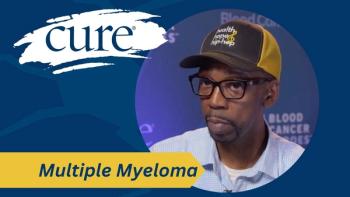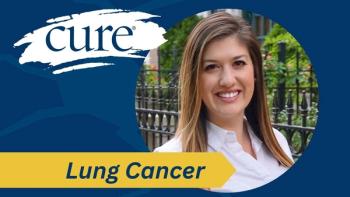
Bone Marrow Transplants 101
Information and advice about bone marrow transplants from the man who owns one
Disclaimer
Cue music and video of happy people while I talk quickly and quietly: I’m not a medical professional, and everything in the article is based on my own experience and research. While I strive to be extremely accurate, please do your own research and verification of anything I say.
Let’s Talk About Unpleasant But Necessary Stuff
The term “bone marrow transplant” has a pretty high “ick” factor. Something about connecting the words needles, bones, and marrow creates a visceral unease deep in our stomachs. Like a lot of things in life, a BMT is both less, and more, scary than the first impression gives. To understand why a cancer patient even needs a transplant, we first need to understand what our bone marrow does.
Bone marrow is an organ, just like a kidney or lung or heart, except spread around a lot more. In that way, it’s probably more akin to skin than any other organ. It has one very important function: to make your blood. Your marrow creates stem cells, which are rather amazing little things. Your body turns them into three types of blood cells: white cells to fight infections; red cells to carry oxygen; and platelets that help clotting to stop bleeding from injuries. Unfortunately, when someone gets one of the “blood cancers” (myeloma, leukemia, or lymphoma), and other treatments fail, it may become necessary to replace it through a transplant, just like a malfunctioning heart.
The name itself, “bone marrow transplant,” is misleading and often causes potential donors, and sometimes patients, to be turned off. It is true that sometimes actual marrow is withdrawn and transplanted. But many times, what is collected and transplanted isn’t the marrow itself, but instead the stem cells circulating in the blood. This makes the “transplant” a very less dramatic event. It basically becomes a transfusion, of one person’s stem cells into another’s, all done through veins. The more technical term for this is a “Peripheral Stem Cell Transplant” or PSCT. Having a stem cell transplant just doesn’t sound as scary as having a bone marrow one, even though the result is exactly the same.
Transplants Come In Two Flavors
There are two main kinds of transplants: autologous and allogeneic. Autologous transplants are an odd sort of thing where a person transplants to themselves! Stem cells are collected from the patient, checked to make sure they are cancer free, and stored. Then, the patient gets chemo (and sometimes radiation) to kill their bone marrow. Since the marrow isn’t making blood any more, for a while, their body uses the existing blood cells, but soon they begin to die off. When it’s clear that the marrow is completely dead, it’s time for the transplant. After a few days, the stem cells take hold in place of the former marrow, and begin making new blood. Since the patient is getting their own cells, there is no chance of rejection. The main risks are from the chemo itself, with side effects ranging from mild to severe; and from infection. During the process, the white counts (infection fighters) drop to zero. This means there is no way for the body to fight infections. Doctors give anti-everything drugs: antibiotics, antivirals, and antifungals. Patients live in very clean, positive pressure, isolation rooms, eat a very restrictive diet, and are carefully monitored. If you’re a fan of the TV show Seinfeld, think “Bubble Boy!”
This fresh start may cure cancers, or at least put them into long term remission. In my case, with Mantle Cell Lymphoma, I was in remission for over 5 years. This is very dependent on the type of cancer, treatments, and individual. The other type of transplant, allogeneic, works on a different principle to rid the body of disease.
This kind, sometimes called a donor transplant, fights the disease two ways. First, you get someone else’s bone marrow, just like you’d get someone’s kidney or heart. I was quite surprised to learn that you can even change blood types! You truly get the other person’s bone marrow and blood system. The second fight occurs because of the natural rejection syndrome, called Graft vs. Host disease. Cancer is your own body attacking itself. Since it’s your cells, your immune system ignores them. Through drugs, (again like any other transplant), the rejection syndrome is controlled and continually fights any rogue cells. Eventually, in 1 — 5 years, the body accepts the new blood system, and transplant drugs can be withdrawn. The process is the same as for an autologous transplant: killing the marrow, falling counts, transfusion, recovery. Except of course, that you’re getting someone else’s stem cells (or marrow).
The risk in allogeneic transplants is higher. Managing the graft vs. host disease requires close monitoring and constant adjustment of drugs until stability is reached. I don’t like to give statistics on this, because it’s a very individual thing. Variables include age, overall health, stage of cancer, type of cancer, which chemo regime is used, how good the donor match is, and many other factors.
How Much Fun Is A Bone Marrow Transplant?
Frankly, not much. Nurses tell stories about people cruising through, having lots of company and pretty much feeling OK. Some people get seriously ill, or worse. My experience during my auto transplant was somewhere to the right of a root canal, and to the left of a heart transplant. I had just enough complications and side effects to make my upcoming allo transplant something I have to do, but I don’t look forward to it. Since I’ve tried 9 major types of treatments, and none of them have cured me, and this one has a high chance of succeeding, it’s what must be done. How it goes will be the subject of this blog.
We’re In This Together
I’ll post my progress regularly here, with a more personal version on my
Stay tuned to this channel, the ride is about to begin. Valentine’s day is the beginning of Kevin’s Big Adventure!




